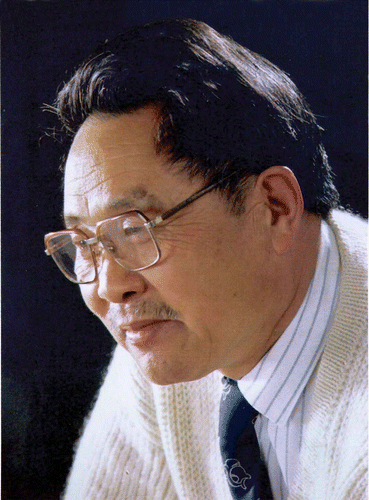Professor Mu Zang, 1930–2011
 World-class mycologist Mu Zang, Professor of Kunming Institute of Botany (KIB), Chinese Academy of Sciences (CAS), died on Thursday, 10 November 2011, from cardiac arrest in Kunming, Yunnan Province, China. He was 81.
World-class mycologist Mu Zang, Professor of Kunming Institute of Botany (KIB), Chinese Academy of Sciences (CAS), died on Thursday, 10 November 2011, from cardiac arrest in Kunming, Yunnan Province, China. He was 81.
Zang was born on 28 December 1930 in Yantai, a coastal city in Shandong Province in eastern China. He graduated in biology in 1953 from Dongwu University in the ancient city of Nanjing, Jiangsu Province. From 1954 to 1973, he taught biology at Nanjing Normal University, rising from Assistant Lecturer to Lecturer. It was during this time that he developed a strong interest in mycology and lichenology. In 1974, he moved to KIB of the CAS to pursue his interest in fungi, working first as an Associate Research Professor and then as Full Research Professor. KIB is one of the premier institutes of biodiversity research in China and is located right in the middle of a world biodiversity centre.
Professor Zang's research over half a century covered many groups of fungi belonging to both the Ascomycota and Basidiomycota. He described more than 140 new species, 5 new (sub)sections, and 3 new genera. Of special note was his work on the Boletales in China. Through over 30 years of painstaking fieldwork and detailed analyses, he clarified their taxonomy and systematics, established a new genus (Sinoboletus), four new (sub)species, and described over 40 new species within the Chinese Boletales. Equally extensive are his research results on the ecology and biogeography of fungi, establishing southwestern China as a key centre of origin for fungal diversity. Over his career, he published over 150 papers and was the chief editor for 6 books and co-edited 6 other books. He also wrote two monographs on Boletaceae in China. He co-authored and published his last book, titled “Dictionary of the Families and Genera of Chinese Cryptogamic (Spore) Plants,” with his wife, Professor Xinjiang Li, also of KIB.
Aside from basic research on fungal taxonomy and systematics, Professor Zang also initiated and participated in several applied research initiatives aimed at reforestation, improving the health of forests, and artificially cultivating wild gourmet mushrooms and medicinal fungi.
Professor Zang was instrumental in establishing the Cryptogamic Herbarium of KIB (HKAS). Now HKAS is one of the largest and most active fungal herbaria in the world with over 210,000 specimens. He was the head of the herbarium for many years and took enormous and justifiable pride in his depth of knowledge and expertise of the collections. He surveyed broadly throughout the Hengduan mountain ranges that covered most of Yunnan and significant parts of Sichuan, Tibet, and Qinghai. He contributed over 13,800 fungal specimens, >24,500 lichen specimens, and >1000 moss specimens to the herbarium.
Professor Zang served as the associate director of the Key Laboratory of Mycology and Lichenology of the CAS and as the vice president of the Mycological Society of China. He received many awards from both within and outside of China. These included the CAS Outstanding Achievement Award (1986), the Chinese National Science Research Awards (1993, 1995, and 2004), the Science and Technology Application Progress Award of the Chinese Ministry of Forestry (1992), and the Japanese N. Hiratsuka Award (2003).
Professor Zang was not only a world-class mycologist but also a great ambassador for the Chinese mycology community. He helped establish research collaborations between Chinese mycologists and those from many other countries, including the United States, Canada, Japan, Finland, France, Germany, and Australia. Such exchanges were very important for the Chinese mycological community in the 1980s and in the early 1990s when the mycology infrastructure in China was very rudimentary. These exchanges benefited not only the Chinese mycologists but also those from other countries. For example, the comment below from Professor Franz Oberwinkler of Tubingen University in Germany showed Professor Zang's foresight in establishing the Cryptogamic Herbarium:
We highly estimate your merits in founding and developing the Cryptogamic Collections in the Botanical Institute of Academia Sinica in Kunming. This herbarium is not only of the highest importance for Yunnan and China, but also documents the huge diversity of cryptogams in the region… . the Cryptogamic Collection of your institute are of special international importance.
In these and other interactions, Professor Zang always set very high standards for himself and for others around him. Through his almost six decades of research and teaching, Professor Zang has impacted not only mycology but also many others around him outside of the scientific community. He read broadly and was an excellent painter, calligrapher, and avid stamp collector. He is survived byhis wife and a long-time companion, Professor Xinjiang Li, their son Jian Zang, daughter Xiaowei Li, and grandchild Xujun Zang. His passing is a loss not only for his family, for KIB, for the mycological community, but also for many of us who got to know him over the years and who have been touched by his knowledge, generosity, and passion for life and science.
Jianping Xu, Ph.D.
Department of Biology, McMaster University, Hamilton, ON, Canada
Zhu L. Yang, Ph.D.
Kunming Institute of Botany, Chinese Academy of Sciences, PR China